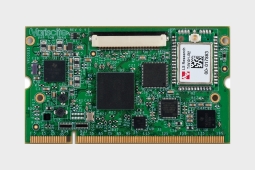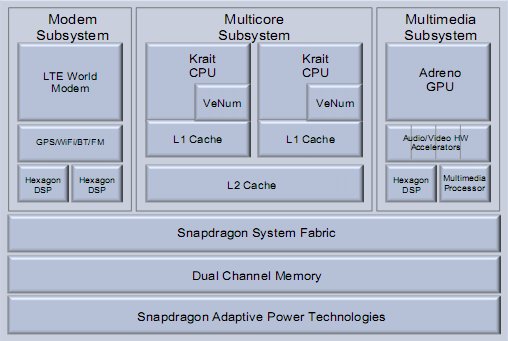Berkelium is a BSD licensed library that provides off-screen browser rendering via Google’s open source Chromium web browser. It takes advantage of Chromium’s multiprocess rendering to isolate browsers from each other and can render to any buffer in memory. The user of the library can inject input and javascript code into web pages to control them, as well as listen for events generated by the page such as navigation events, load sequence events and paint events. Berkelium provides a small API for embedding a fully functional browser into any application. This library is used by Xibo Digital Signage Player python client. I’ll give the instructions I followed to build Berkelium and Chromium for ARM. For now the build works, but I have a problem running berkelium in the emulator. First, you’ll need to install some tools and the development version of some libraries: sudo apt-get install git-core subversion cmake doxygen […]
Variscite System On Module based on TI OMAP4460
Variscite – an Israeli company specialized in embedded systems manufacturing, development and consulting – announced the VAR-SOM-OM44 system on module (SOM) based on TI OMAP4460 processor (dual core Cortex-A9 cores @ 1.2 ~ 1.5GHz). This SOM features 512MB of DDR2 SDRAM and a microSD socket, I/O including gigabit Ethernet, USB 2.0, 3D camera, and HDMI. Variscite also announced the VAR-OM44CustomBoard, a development board that can be customized to match specific customers requirement as well as the VAR-DVK-OM44, a complete development kit with touchscreen for evaluation and application development purposes. Here are the VAR-SOM-OM44 SOM specifications: CPU: Texas Instruments OMAP4460 Processor (1.2GHz – 1.5GHz) dual-core ARM Cortex-A9 MPCore GPU: PowerVR™ SGX540 graphics core @384MHz Memory: 512-1024MB 400MHz LPDDR2 Built-In micro-SD Socket Display: LCD interface – Supporting 24bpp resolutions up to WXGA HDMI interface – Supporting 1080p 4-wire touch screen panel interface Audio: Line-in Stereo Headphone out Digital microphone S/PDIF Out Network: 10/100/1000Mbps […]
Android 2.3.7 (Alpha) for HP TouchPad Has Been Released
CyanogenMod team has just released the CyanogenMod 7.1 port for the HP TouchPad. This is an initial alpha release, so there are still plenty of bugs and a few non-working features, but overall it should be in a state that you can at least play around with Android on your TouchPad. For this release they used a new experimental installer called the Alpha CyanogenMod Experimental Installer (ACMEInstaller). This installer will reorganize partitions on the flash (resize the WebOS media volume to make room for Android).ACMEInstaller will be used to install ClockworkMod Recovery, CyanogenMod 7.1 and the new Moboot bootloader. After installation you’ll be able to boot WebOS or Android (dual-boot). The firmware currently support the following features: GPU acceleration 1080p video playback Wifi(with caveats) Bluetooth(no headset profile) Touchstone dock support Audio As it is alpha, there are also plenty of known issues including: Higher than normal battery drain, ~2%/hr while […]
CubeStormer II Solves The Rubik’s Cube in 5.352 Seconds
Do you remember the ARM Android Based Rubiks Cube Solver ? Last year it could solve the puzzle in an average of 15 seconds. David Gilday has upgraded its robot with the help of Mike Dobson and named the device CubeStormer II. They released a video showing the CubeStormer II solve the Rubik’s Cube in 5.352 seconds, faster than the human world record (5.66 seconds). The mechanics are constructed entirely from LEGO, including four MINDSTORMS NXT kits, with the addition of a Samsung Galaxy S II smartphone running a custom Android app as the robot’s brain. The app uses the phone’s camera to capture images of each face of the Rubik’s Cube which it processes to determine the scrambled colours. The solution is found using an advanced two-phase algorithm, originally developed for Speedcuber (originally developed by Mike Dobson), enhanced to be multi-threaded to make effective use of the smartphone’s dual-core […]
New Android 2.3.4 Release For ST Ericsson Snowball Development Board
Igloo Community – the team developing for ST Ericsson Snowball Nova A9500 development board – has released the second version of Android 2.3.4 for the board. It can be downloaded at http://igloocommunity.org/download/android/images/20111012/ for V3 and V5 boards. Here are the new features and main bug fixes for this release: GPS support enabled WiFi instabilities fixed and enabled in the UI The browser home page crash is gone and the known issues: Audio recording does not work Potrait mode does not work (rotating the device corrupts screen until rotated back) The phone app crashes (no modem support) The flashing instructions are available at http://www.igloocommunity.org/support/Flashing_howto Jean-Luc Aufranc (CNXSoft)Jean-Luc started CNX Software in 2010 as a part-time endeavor, before quitting his job as a software engineering manager, and starting to write daily news, and reviews full time later in 2011. www.cnx-software.com
Generate a Custom ARM Rootfs Easily with Rootstock
You may need to generate your own rootfs for your ARM target board, but do not want to cross-compile all libraries manually. You can achieve this with rootstock, a utility that generates Ubuntu armel rootfs tarballs and/or qemu image, to be uncompressed onto a root device. First install roostock: sudo apt-get install rootstock Then generate a rootfs with the required libraries: sudo rootstock –fqdn beagleboard –login cnxsoft –password temppasswd \ –imagesize 3G –seed xfce4,gdm,pkg-config,python,perl,g++,bison,flex,\ gperf,libnss3-dev,libgtk2.0-dev,libnspr4-0d,libasound2-dev,libnspr4-dev,\ libgconf2-dev,libcairo2-dev,libdbus-1-dev,libstdc++6-4.5-dev,libexpat1-dev,\ libxslt1-dev,libxml2-dev,libbz2-dev –dist natty Here are the details of the command line parameters: –fqdn: Hostname to be used for the target system –login: Login ID of the admin user created during setup –password: Password of the admin user created during setup –imagesize: Size of the target filesystem to be created (default 1GB) –seed: List of packages to install –dist: Specify Release to build (jaunty, karmic, lucid, maverick or natty) Alternatively you could also use an […]
MontaVista adds HTML5 and Android support to its GENIVI-Compliant Automotive Technology Platform
Montavista announced secure HTML5 and Android support to its Automotive Technology Platform (ATP) which is GENIVI Compliant. HTML5 support is provided via MontaVista’s ModiiTM Digital Media Solutions Platform. Both Android and HTML5 are made independant of critical part of the software as they are executed in a MontaVista Linux Container (isolated virtualized container environment). Here’s an excerpt of the press release: SANTA CLARA, Calif. – October 10th, 2011 – MontaVista® Software LLC, today announced secure HTML5 and Android support for its Automotive Technology Platform (ATP). The addition of HTML5 support is provided via MontaVista’s ModiiTM Digital Media Solutions Platform which adds a powerful HTML5-based UI Framework to its recently released GENIVI-Compliant Platform. The Android support delivers a high performance Android runtime environment, which opens up access to a vast number of popular applications from the entire Android ecosystem. Complementing the Android and HTML5 capabilities, MontaVista has implemented a unique dual-layered […]
Qualcomm Snapdragon S4: MSM8960
Qualcomm initially announced the Snapdragon S4 is a blog post back in August. They have now released a white paper providing further information on this processor. The Qualcomm Snapdragon S4 (MSM8960) is composed of two Krait CPUs clocked between 1.2 and 1.5 Ghz, an Adreno 225 GPU and a modem subsystem with LTE, GPS, Wifi, Bluetooth and FM support. It will be manufactured using 28nm technology and provide much lower power consumption compared to previous generations. Key features and improvements: New CPU micro-architecture: The Krait CPU offer a 60% performance improvement compared to the scorpion CPU used in previous generations. SIMD/VFP performance: Multimedia instructions (SIMD) and floating point operations have also been improved, but no metrics have been provided. Optimized memory subsystem: Krait includes dual-channel memory. Dual-channel memory is critical in order for the processor to being able to handle the large bandwidth requirements in multicore systems. 25/40% power improvement: […]







